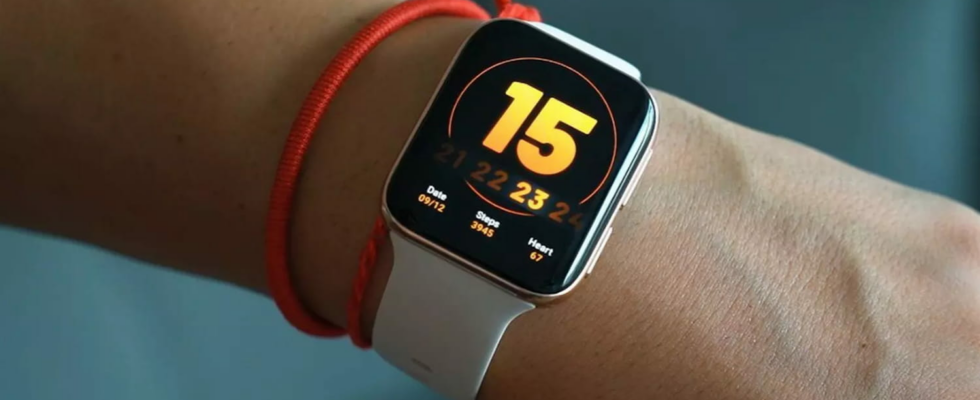Be careful if you usually wear a smart watch or bracelet, as they contain high levels of PFAS, particularly toxic “forever pollutants” that our skin can absorb.
Like millions of people around the world, you may wear a connected watch or bracelet – such as Apple Watch, Samsung Galaxy, Garmin or Fitbits – every day, whether to monitor your sleep, record your workouts, have your favorite apps within reach – or rather, wrist – or keep an eye on your general health. Many brands, Apple in the lead, also highlight this aspect in their marketing communication – the Apple company constantly points out that its product has already saved many lives. However, this accessory can be dangerous for your health. We already knew that connected watches and bracelets were real breeding grounds for bacteria (see our article), but a study published in the journal Environmental Science & Technology Letters also reveals that they contain toxic products.
Researchers at the University of Notre Dame in the United States analyzed the bands of 22 smartwatches, including the Apple Watch Sports bands, and found that all fluoroelastomer bands contained high levels of perfluorohexanoic acid (PFHxA). ), a compound that is part of the PFAS family. These substances are better known as “perennial pollutants” because they are difficult to break down and can accumulate in body tissues. Organic fabrics like ours… Wearing them every day, especially during physical activity where perspiration can promote the skin absorption of these toxic compounds, is therefore dangerous.
Connected watches: alarming concentrations of PFAS
The problem therefore comes from the fluoroelastomer, a plastic and elastic material often used to design the sports bracelets of connected watches, which are generally supplied by default with the models. This is for example the case of the “Sport” bracelets of the Apple Watch, or those of the Huawei Watch Fit 3 and the Pixel Watch.
The median concentration of PFHxA level was 800 parts per billion (ppb), but it could rise to 16,000 ppb for some samples. For comparison, a previous study revealed a median concentration of PFAS levels around 200 ppb in cosmetics. Researchers had never observed such concentrations in products worn directly on the skin.
Connected watches: what are the health risks?
PFHxA is part of PFAS, a group of chemical compounds used in industry since the 1940s. Their almost indestructible molecular structure has earned them the nickname “perennial pollutants.” Once released into the environment, they degrade very slowly and tend to accumulate in living organisms.
PFAS are responsible for many health problems, such as immune system disruption, fertility disorders, cancers, diabetes, obesity and developmental problems in the fetus. Despite these risks, PFAS are still widely used in products such as nonstick cookware, umbrellas, cosmetics, furniture, cleaning chemicals, water-resistant fabrics, and stain-resistant coatings.
PFHxA is particularly used in pizza boxes, rain jackets, firefighting foam and waterproofing sprays. Even if the precise effects of this molecule remain to be determined, experts agree on the need to limit our exposure to these substances. Europe is going elsewhere ban the use of PFHxA from 2026.
Connected watches: avoid fluoroelastomer bracelets
Although scientists have not tested these products on humans, they nevertheless reported that the high levels of PFAS in these products “present a significant risk of transfer to the dermis [la peau] and subsequent human exposure.” Recent studies have actually demonstrated that PFAS can cross the skin barrier and enter the bloodstream. “Additionally, several of these watch bands have been promoted as sports and fitness watches, implying that the wearer can exercise with them, meaning additional contact with sweat and skin pores. open skin”, alert Notre-Dame researchers.
For now, researchers can only urge caution and suggest alternatives. Especially since the use of fluoroelastomers in bracelets is not a technical necessity. Other materials with the same elasticity or moisture resistance characteristics are available for smartwatch bands. This is the case of silicone, used for example for the Sport Band bracelet of Samsung Galaxy Watches or Garmin watch straps, or of rubber, as for the Marine Band bracelet of the Galaxy Watch Ultra. For non-sports use, metal, fabric or leather can also be excellent solutions. These materials should therefore be favored to avoid health complications. Prevention is better than cure!

